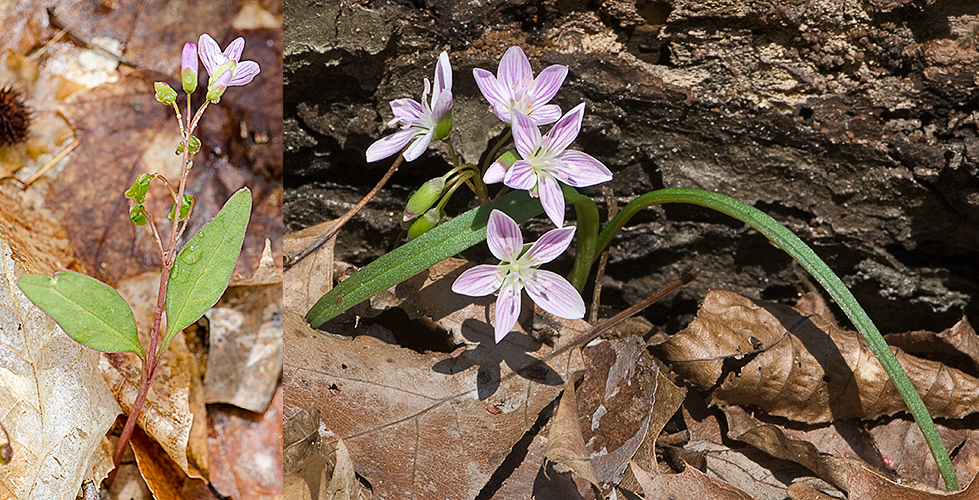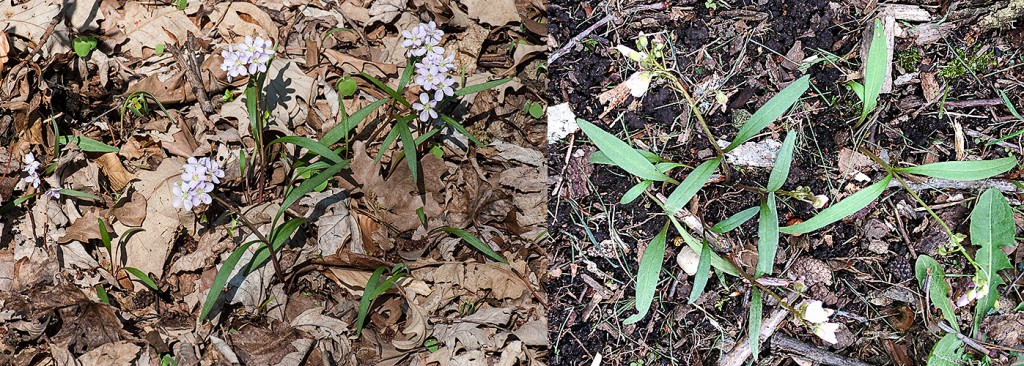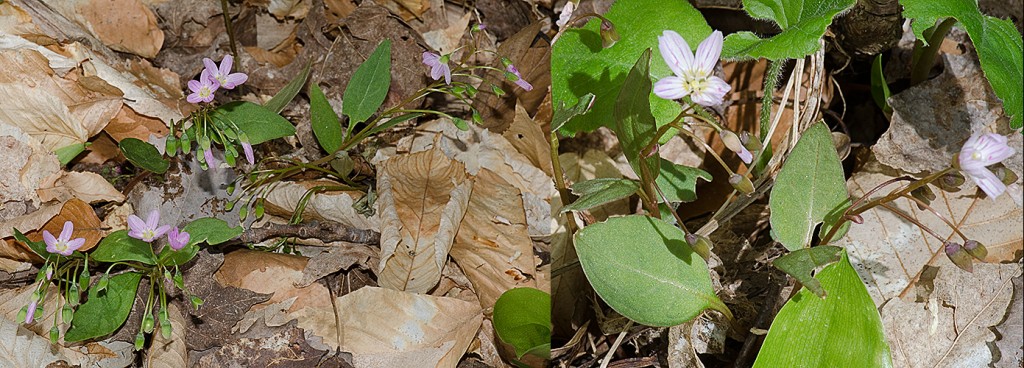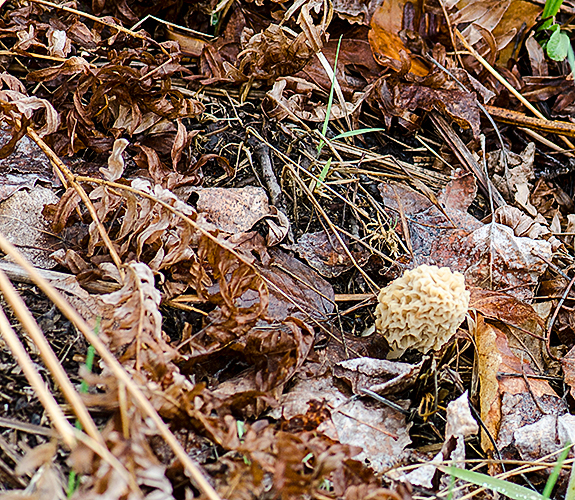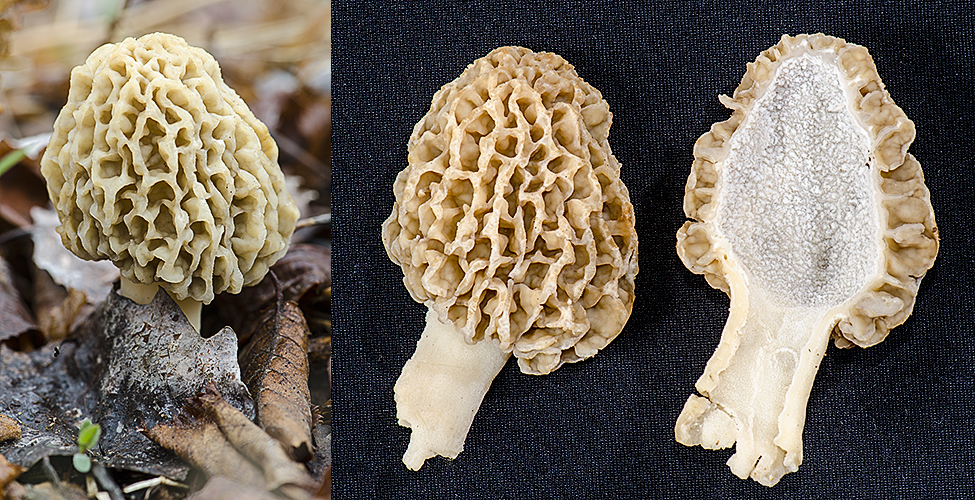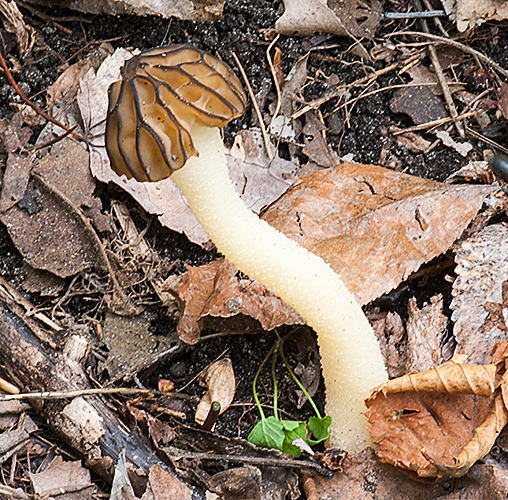Michigan has two species of Spring Beauty: Eastern Spring Beauty (Claytonia virginica) and Carolina Spring Beauty (Claytonia caroliniana). Spring Beauty is one of earliest spring wildflowers. It flowers before the trees leaf out. A month after flowering the plants have set seed and begin to yellow. Michigan Audubon’s Warner Sanctuary has acres covered with Eastern Spring Beauty. Six weeks after the plants were in full flower I could not find a sign of the plants above ground.

Spring Beauty Flowers showing range of color
L -aberrant 6 petaled flower with very dark color C- pale pink flowers R- nearly white flowers
Both of our Spring Beauties have white flowers that are streaked with pink veins. Some flowers lack these veins and are pure white. Other flowers are so heavily streaked as to appear pink. There is usually much variation in any population. They have pink pollen and normally 5 petals.
Eastern Spring Beauty has narrow leaves without a distinct petiole (leaf stem). Where the two species occur together it starts flowering about a week later than Carolina Spring Beauty but their flowering times overlap. In Michigan, Eastern Spring Beauty occurs mostly south of the Bay City to Muskegon Line but there are some records north of that line.
Carolina Spring Beauty has broad leaves with distinct petioles. In Michigan, it occurs mostly north of the Bay City to Muskegon Line.
Most species of plants have a distinct chromosome number. Spring Beauties have a wide range of numbers and appear to breed successfully with plants of other numbers. Reported chromosome numbers for Carolina Spring Beauty are 2n=16, 24, 25, 26, 27, 36, 38. For Eastern Spring Beauty 50 cynotypes (chromosome numbers) have been recorded ranging between 2n = 12-190. Eastern Spring Beauty in the Great Lakes region has numbers below 2n=28 with the higher numbers coming from farther south.
There is still time to find Carolina Spring Beauty blooming in northern Michigan. Get out and look for this pretty plant if you can.
Copyright 2015 by Donald Drife
Webpage Michigan Nature Guy
Follow MichiganNatureGuy on Facebook

